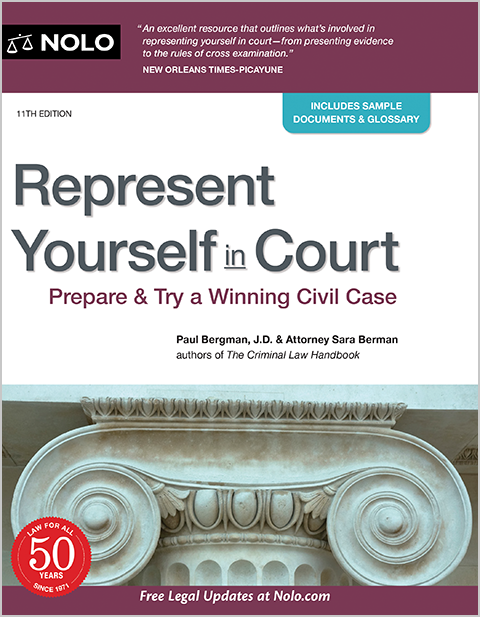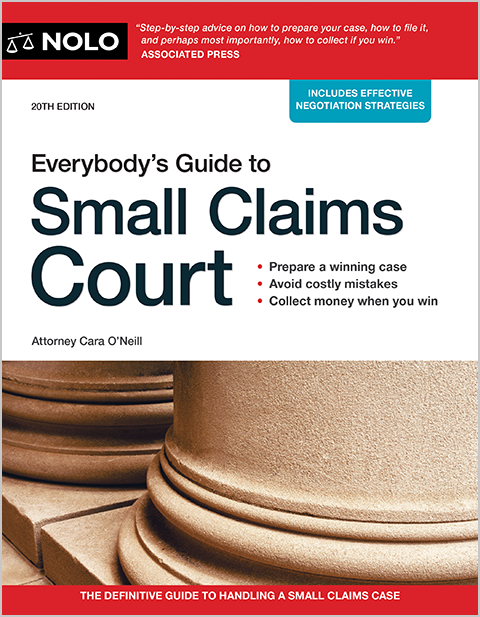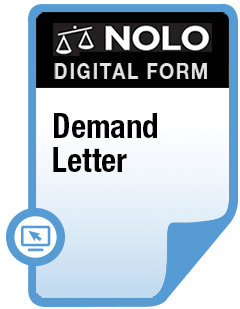You got a Montana money judgment. Now it's time to collect. We explain how to record Montana judgment liens, collect on a lien, extend your judgment, and more.
You went to court and got a judgment that says you're entitled to money from the party you sued, now called a "judgment debtor." What comes next? How can you—the judgment creditor—collect the money you're due? That's the focus of this article.
One way to collect is by putting judgment liens on the judgment debtor's Montana property. After a quick review of how judgment liens differ from judgments, we'll turn our attention to the specifics of Montana law. In particular, we cover:
- the kinds of property subject to Montana judgment liens
- how you put judgment liens on Montana property
- how long your judgment lien lasts, and
- the ways you can turn your judgment lien into money.
If you want some background information, here's more about how court judgments are collected.
What's the Difference Between a Judgment and a Judgment Lien?
A judgment is a court order that says a judgment creditor is legally entitled to a sum of money from a judgment debtor. But a judgment, standing alone, isn't self-enforcing. That is, you can't take a judgment to your county sheriff's office and demand that the judgment debtor's real estate be sold to pay you.
If you want to seize and sell the judgment debtor's property, you first have to attach your judgment to specific items of property. That's what a judgment lien does. As we discuss later, when your judgment is docketed (recorded) or a judgment transcript is filed with the district court clerk, the judgment becomes a lien against the judgment debtor's nonexempt real estate in that county. Once that's done, you can look for ways to turn your judgment into cold, hard cash.
Kinds of Property Subject to Montana Judgment Liens
In Montana, you can attach judgment liens only to real estate, meaning land, houses, buildings, and other improvements. A properly recorded judgment attaches a lien to real estate the judgment debtor:
- presently owns, and
- acquires later, as long as your judgment lien is still good.
You can't put judgment liens on Montana personal property—cars, artwork, antiques, electronics, household furnishings, and the like. But that doesn't mean a judgment debtor always gets to keep their autos, boats, and other big ticket items. Even without judgment liens, there's a way to have the sheriff seize personal property.
If you're considering this step, speak to a Montana collection lawyer first. They can tell you whether it's worth your time and expense to go after the judgment debtor's personal property—and there's a good chance it won't be. If it's likely to be worthwhile, they'll guide you through the process.
Property Exempt From Montana Judgment Liens
Like all states, Montana exempts some property—both real and personal—from the reach of creditors. Unless stated otherwise, dollar amounts mentioned here represent the maximum value of the debtor's exempt equity in the property, which might not be the same as the property's market value.
Here are a few examples.
- Homestead exemption. As of 2025, Montana's homestead exemption protects equity of $409,450 in the judgment debtor's primary residence. This amount is adjusted annually. The exemption covers real estate or mobile homes, along with any connected land and improvements like fences, separate garages, and wells.
- Motor vehicle exemption. Montana law protects up to $4,000 of equity in one motor vehicle.
- Household goods exemption. Judgment debtors get an exemption for household furnishings and goods, appliances, jewelry, wearing apparel, books, and similar property. The aggregate value can't exceed $7,000 total, and no single item can be worth more than $1,250.
- Tools of the trade exemption. A Montana judgment debtor can exempt from collection certain implements, professional books, and tools of the trade. The aggregate value of all exempted items can't exceed $4,500.
How to Attach Montana Judgment Liens
A Montana district court judgment automatically creates a lien on the judgment debtor's nonexempt real estate in the county where judgment was entered. To attach a lien to real estate in a different Montana county, follow these steps.
- Get a certified transcript. Get a certified judgment transcript (summary) from the clerk of the court that entered the judgment. Check the clerk's website for information about online or mail orders. If you don't find what you need online, call the clerk's office for instructions. Order one certified transcript for each county where you want a judgment lien.
- File the certified transcript. File a certified judgment transcript with the district court clerk in each county where you want to attach a lien. Once the transcript is filed, your judgment becomes a lien on all the judgment debtor's nonexempt real estate in that county.
A Montana judgment lien expires 10 years from the date:
- the judgment was docketed (recorded in the court clerk's judgment docket) in the county where judgment was entered, or
- the judgment was entered, for all other counties.
To illustrate, suppose you got a money judgment from the Yellowstone County district court. The court entered judgment on June 10, 2022. Two days later, on June 12, 2022, the court clerk docketed the judgment. On July 15, 2022, you filed a certified transcript with the district court clerk in Missoula County.
Your judgment lien in Yellowstone County runs for 10 years from June 12, 2022, the judgment docketing date. Your Missoula County lien, by contrast, is good for 10 years from June 10, 2022, the date judgment was entered.
How Long Does a Montana Judgment Last?
A Montana judgment expires 10 years from the date it was originally entered. What happens if you haven't collected what you're owed before the 10-year deadline is up? You must go back to court and get a new judgment to replace the old one.
Getting a New Montana Judgment
Unlike many states, Montana doesn't let you extend a judgment simply by filing a motion or an affidavit in court. If you need more time to collect, you have to go back to court and file a new lawsuit. Because it's a new lawsuit, you must serve the judgment debtor with the lawsuit papers, just as you would in any other case.
You have the burden to prove that your judgment is still valid, along with the amount you're due (including all costs and interest). Note, importantly, that you must do this before your original judgment expires. If your suit succeeds, you'll get a new judgment to take the place of the old one. Your new judgment is good for another 10 years.
Lawsuits—even those that are fairly straightforward—take time. Allow at least six months for the process to run its course. Better still, hire a Montana collection attorney to prepare, file, and handle the case for you.
Record New Judgment Liens
As with your original judgment, a new district court judgment gives rise to an automatic judgment lien in the county where it's entered. But if you want to attach liens in other Montana counties, you must follow the procedure outlined above.
How Do You Turn a Montana Judgment Lien Into Money?
In general, there are three ways you can try to collect on a Montana judgment lien:
- negotiate a settlement
- wait for the judgment debtor to sell or refinance the property, and
- execute on your lien.
Negotiate a Settlement
If you want payment sooner rather than later, this is likely your best choice. No, you won't get all the money you're entitled to, but that's the nature of a settlement. You'll collect faster—and more inexpensively—than via the other two options.
Wait for the Judgment Debtor to Sell or Refinance
Most often, a buyer or lender will insist on clear title, free of all judgment liens. To sell or refinance, the judgment debtor will have to approach you to make a deal. Only now, you've got more negotiating leverage. As long as you're willing to sit tight and wait, this too is a low-cost, low-stress way to collect.
Execute on Your Lien
Executing on your lien means having the sheriff sell the judgment debtor's property at auction. This might seem like a tempting option. But before you head down this path, check with a local attorney to find out about the legwork and costs involved. In addition, see who's ahead of you in payment priority, or you might discover—too late—that the sale proceeds aren't enough to pay you in full (or at all).
Lastly, be aware that this step might be just the push the judgment debtor needs to declare bankruptcy. Should that happen, you're likely to be standing in a long, very unhappy line of creditors with little chance of getting paid.
Next Steps
We've covered Montana judgment lien basics, but of course, the devil's in the details. Now that you're familiar with Montana law, you might decide that your best option is to get help collecting your judgment. An experienced Montana creditor's rights or collection attorney can answer your questions and help you chart a collection path that gives you the best chance to maximize your recovery.



